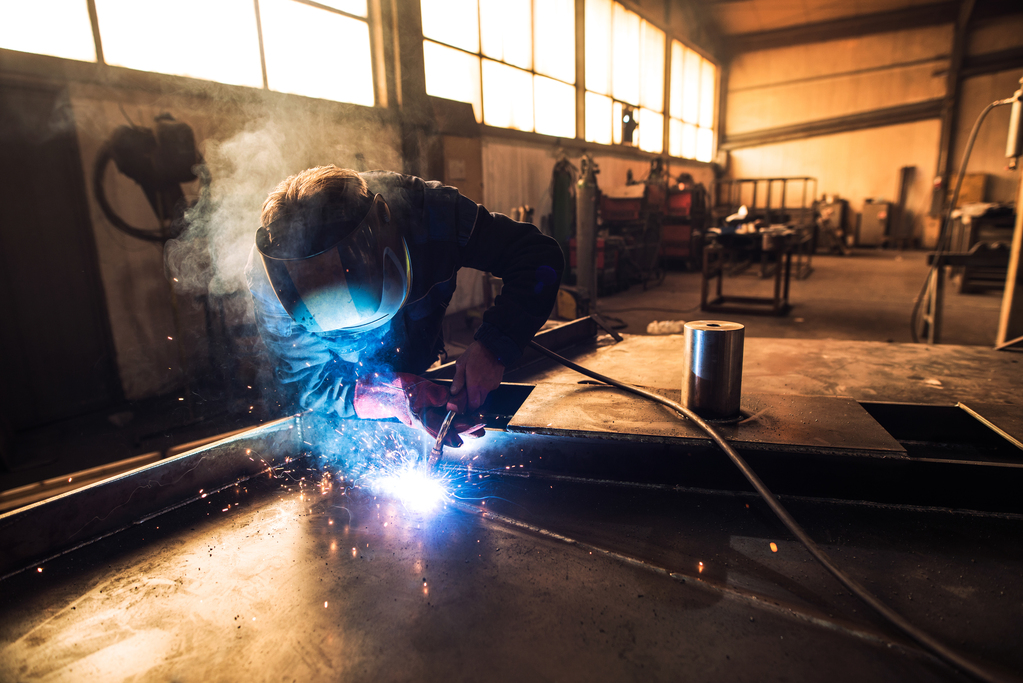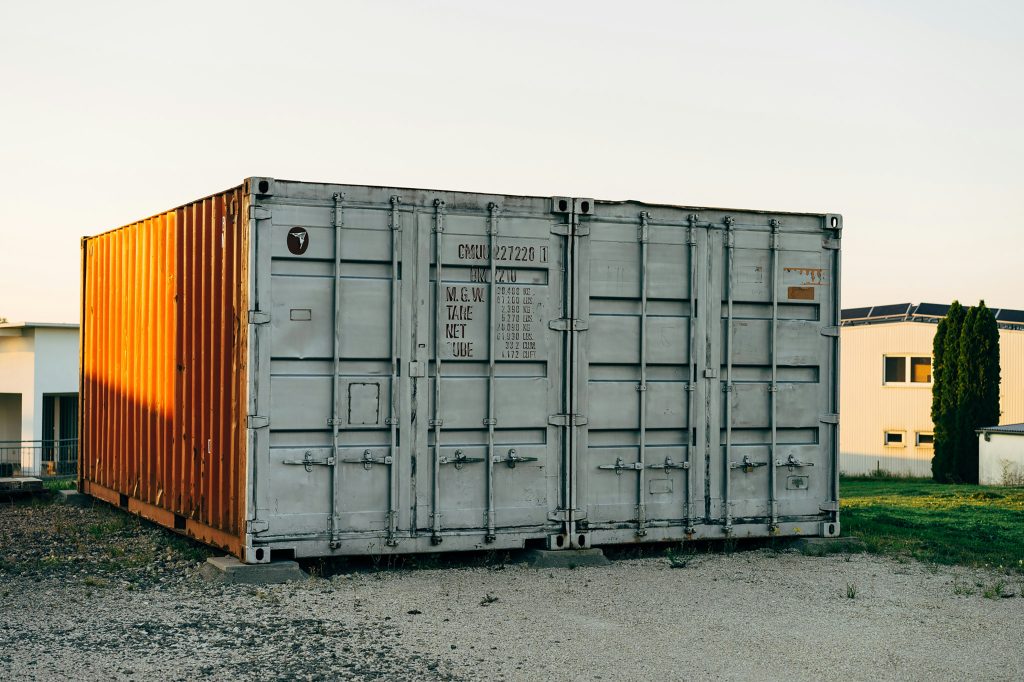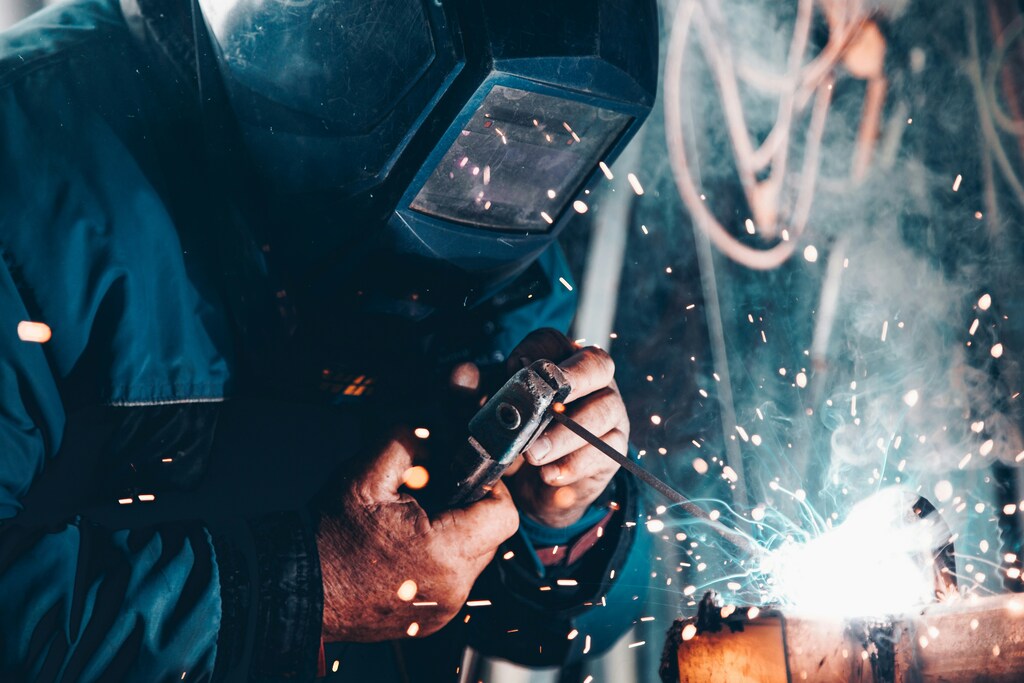The American Welding Society (AWS) is a professional organization that sets standards, offers certifications, and supports education and research related to welding and joining technologies.
It develops important codes and specifications for structural welding (steel and aluminum), shipbuilding, aerospace, pipeline, automotive, and manufacturing.
AWS also offers internationally respected certifications for professionals like the Certified Welder (CW) that prove a welder’s skills and knowledge in the industry.
Welding your container according to the AWS standards can be a major advantage for project success.
If you want to build, modify, or repair your container, AWS certifications are highly respected and often required by clients for trust, safety, and code compliance.
For a complete knowledge of the American Welding Society Standard on the container welding process, find out in this article!
AWS for the Container Industry
When it comes to shipping containers, the relevant AWS certifications mainly focus on structural welding, inspection, and fabrication quality.
It is because containers must be strong, weatherproof, and safe for heavy loads and rough transport.
To weld a container, you will need workers with Certified Welder (CW) certification to verify their ability to weld according to specific procedures.
With this certification, workers are eligible to weld container walls, floors, roofs, and door frames.
You will also need to follow the AWS D1.1 Structural Welding Code, a welding rulebook, a standard code welders and inspectors follow when welding structural steel, and container steel falls into this category.
Knowing and applying D1.1 is often required in container projects, especially if they’re used for housing, offices, schools, and heavy shipping loads.
How to Weld a Shipping Container According to AWS Certification

Understand the Container Material
Shipping containers are usually made of corten steel, which is durable, rust-resistant (forms a protective rust layer), and is slightly trickier to weld than mild steel.
For this kind of steel, you need to preheat for thicker parts to avoid cracking.
Know the Relevant AWS Standard
In welding a container, the AWS D1.1 Structural Welding Code is the main rulebook. It covers:
- Types of joints (butt, fillet, corner welds)
- Welding positions (flat, horizontal, vertical, overhead)
- Welding procedures (preheat, filler metal, passes)
Select the Right Welding Process
The right welding process is defined by your equipment and the part of the container you’re welding.
The SMAW (Stick) welding process is good for outdoor, heavy repairs (doors, frame welding). The GMAW (MIG) welding process is fast and clean, good for thinner walls or mass production.
Meanwhile, the FCAW (Flux core MIG) is great for thick joints, structural parts, and outdoor use.
These days, most container repair shops use Flux Core MIG (FCAW) because it’s fast and strong.
Joint Preparation
Cut clean edges until there is no rust, no oil, and no dirt. Then, bevel the edges if you’re welding thick pieces (full penetration welds).
Last, fit-up joints tightly, as AWS standards require precise fit-up to ensure strength. Remember that poor prep = weak welds, which will fail AWS inspection.
Welding Techniques
According to AWS, you need to apply these welding techniques to have smooth, no undercuts, no cracks, and no porosity results:
- Maintain a steady travel speed during welding.
- Use correct electrode angles (15° push or drag, depending).
- Keep correct arc length – too long = weak welds, too short = bad penetration.
- Apply multiple passes for thicker steel (root pass, filler passes, cover pass).
- Control heat input – Corten steel needs controlled heat to avoid embrittlement.
Inspection and Testing
Welds must have no cracks, porosity, slag inclusions, excessive spatter, or undercut. To test that, according to D1.1 rulebook, you need to do Non-Destructive Testing (NDT), which includes Magnetic Particle Testing and Ultrasonic Testing.
You also need to perform Destructive Tests (for certification practice), which consist of Bend tests and Tensile tests. If your welds don’t meet D1.1 quality, they will fail the American Welding Society certification inspection.
Why Should We Weld a Shipping Container?

Structural Repairs
Containers get damaged during shipping (dents, cracks, corrosion). Welding restores strength by fixing holes and punctures, broken door frames, and cracks in walls, roofs, or floors.
Without welding, containers would quickly become unsafe or unusable.
Custom Modifications
Welding lets you transform a container into various container-based buildings, like container homes or cafes.
It is essential when you customize containers for new purposes, like adding windows, installing doors, joining multiple containers together for bigger spaces, and creating cutouts for HVAC, plumbing, and electrical.
Strength and Stability
Welding is especially important if you modify containers in rough weather areas. When you weld reinforcements like beams, tubes, or stiffeners, it strengthens weak spots, increases load capacity, and improves wind, snow, and earthquake resistance.
Joining Containers Together
Large container buildings often use multiple containers joined by welding. They are often placed side-by-side to create wide open spaces or stacked vertically for multi-story structures.
Welded joints provide permanent, strong connections – much better than just bolts alone. Without welding, multi-container structures would shift, separate, or even collapse.
Security
A welded container is much safer against theft and vandalism. Welding can add steel bars for window protection, reinforced lockboxes for doors, and security cages inside. Solid welded parts make containers harder to break into, protecting valuable goods or occupants.
Conclusion
Welding containers to American Welding Society standards means proper material prep, the right welding process, precise technique, and careful inspection. Doing it correctly ensures safe, strong, and code-compliant structures – whether repairing, modifying, or building something like a container home, shop, or office.
If you are looking for a new or used shipping container, check out our products! Standing at the top of the industry, Tradecorp is widely known for its high-quality shipping containers open to so many creative applications. Fill out our quote form, and we’ll guide you in finding the best shipping container for your business goals!

